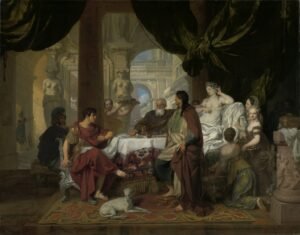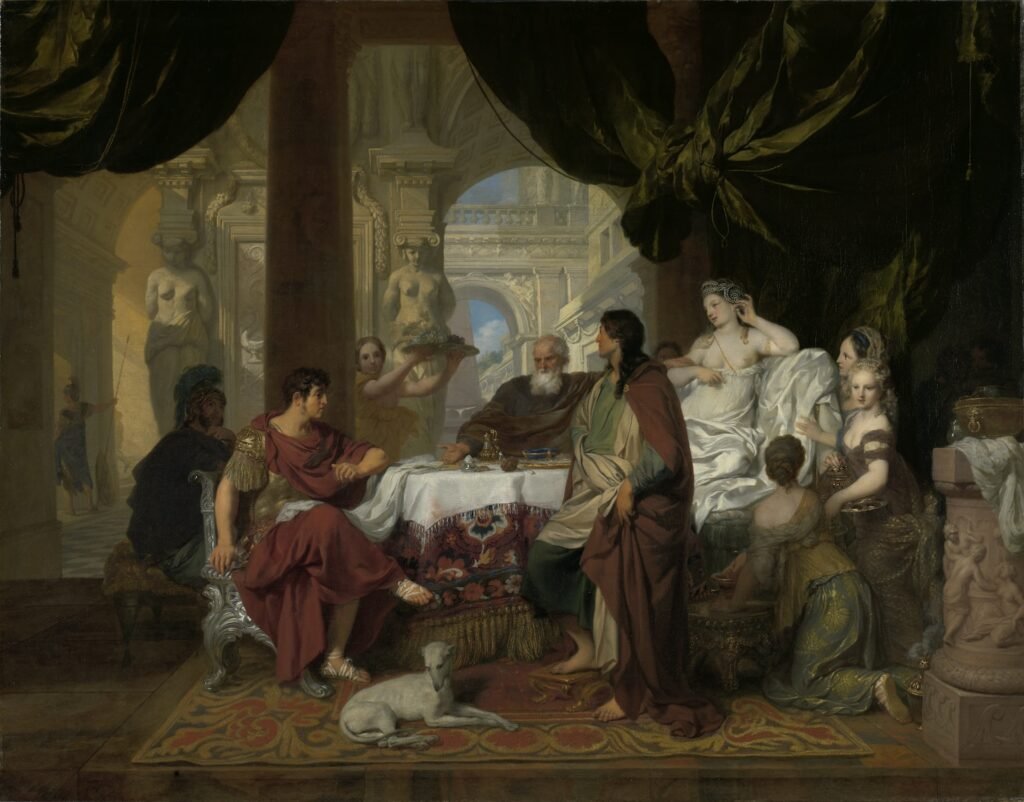Cleopatra, the Legendary Egyptian Queen
Cleopatra, the last pharaoh of ancient Egypt, remains one of history’s most captivating figures. Known for her intelligence, beauty, and political prowess, she left an indelible mark on the world. Born in 69 BC, Cleopatra ruled Egypt from 51 BC until her death in 30 BC. Her reign was marked by political struggles, alliances, and a legendary love story that has continued to fascinate generations. This article delves into the life and legacy of Cleopatra, exploring her rise to power, physical features, political accomplishments, love affairs, downfall, and enduring influence on art, literature, and culture.

The Rise to Power: Cleopatra’s Early Life and Family
Cleopatra was born into the Ptolemaic dynasty, a Greek-Macedonian royal family that ruled Egypt after Alexander the Great’s death. She was the daughter of Ptolemy XII Auletes and his wife, Cleopatra V Tryphaena. Cleopatra’s family lineage was complex, filled with intermarriages and political rivalries. Her father’s weak rule led to internal conflicts, forcing Cleopatra to flee to Syria in 58 BC. However, with the support of Julius Caesar, she returned to Alexandria in 48 BC and took the throne alongside her brother, Ptolemy XIII.
The Fascinating Beauty of Cleopatra: Her Physical Features
Cleopatra’s physical allure was legendary, and her beauty played a significant role in her seduction of powerful men. Ancient accounts describe her as captivating, with a mesmerizing voice and radiant charm. She was said to have a slender figure, enchanting dark eyes, and a captivating presence. Cleopatra understood the power of her appearance and utilized it strategically in her political endeavors, making herself an irresistible force to be reckoned with.
Cleopatra’s Reign: Her Political Struggles and Accomplishments
Cleopatra’s reign was not without its challenges. As a female ruler in a patriarchal society, she faced opposition and had to navigate complex political landscapes. She was known for her intelligence and shrewdness, speaking multiple languages and engaging in intellectual pursuits. Cleopatra sought to maintain Egypt’s independence and expand its influence through diplomatic alliances, military strategies, and economic reforms. She was a skilled administrator and successfully revived the Egyptian economy during her rule.
An Iconic Love Story: Cleopatra and Julius Caesar
One of the most famous aspects of Cleopatra’s life is her romantic involvement with Julius Caesar. In 48 BC, she met Caesar while seeking his support in her struggles against her brother. Their relationship soon turned intimate, and Cleopatra gave birth to a son, Caesarion. However, their affair was short-lived, as Caesar’s assassination in 44 BC left Cleopatra vulnerable. Despite this, their love story has been immortalized in literature, theater, and film, cementing their names as symbols of passion and forbidden love.
A Powerful Alliance: Cleopatra and Mark Antony
Following Julius Caesar’s death, Cleopatra formed an alliance with Mark Antony, one of Caesar’s most trusted generals. Their relationship was not only romantic but also politically advantageous. Together, they aimed to defeat Caesar’s assassins, consolidate power, and expand their influence in the Mediterranean region. Cleopatra’s beauty and charm captivated Mark Antony, and their partnership became a formidable force that posed a threat to Rome’s power.
Cleopatra’s Downfall: The Battle of Actium and Suicide
Cleopatra’s alliance with Mark Antony ultimately led to her downfall. In 31 BC, they faced defeat in the Battle of Actium against Octavian, Caesar’s adopted heir and Antony’s rival. Realizing the gravity of their defeat, Cleopatra and Antony fled to Egypt. In 30 BC, facing capture, Cleopatra chose to end her life rather than be paraded through the streets of Rome as a trophy. According to historical accounts, she died by allowing herself to be bitten by an asp, a venomous snake, thus ensuring her place in history as a symbol of courage and resilience.
The Legacy of Cleopatra: Influence on Art, Literature, and Culture
Cleopatra’s legacy extends far beyond the borders of ancient Egypt. Her story has been immortalized in countless works of art, literature, and films. From Shakespeare’s tragedy “Antony and Cleopatra” to Elizabeth Taylor’s portrayal of the queen on the silver screen, Cleopatra’s allure continues to inspire and fascinate. Her image has become synonymous with beauty, power, and female empowerment, serving as an archetype for strong female leaders throughout history.
Historical Records and Depictions: Uncovering the Truth about Cleopatra
Uncovering the truth about Cleopatra can be challenging due to the limited historical records from her time. Much of what is known about her comes from biased accounts written by her enemies, such as Octavian, and later Roman historians. These accounts may have exaggerated her flaws and downplayed her achievements. However, recent archaeological discoveries and reevaluations of historical sources have shed new light on Cleopatra’s reign, helping to separate fact from fiction and provide a more nuanced understanding of this powerful queen.
Conclusion: The Enduring Legacy of Cleopatra, the Last Pharaoh
Cleopatra’s story continues to captivate and inspire people around the world. Her intelligence, beauty, and political acumen made her a force to be reckoned with during a tumultuous period of history. Despite her tragic end, her legacy lives on through art, literature, and popular culture, ensuring that Cleopatra, the legendary Egyptian queen, will forever be remembered as a symbol of power, beauty, and resilience.

